Don't wanna be here? Send us removal request.
Text
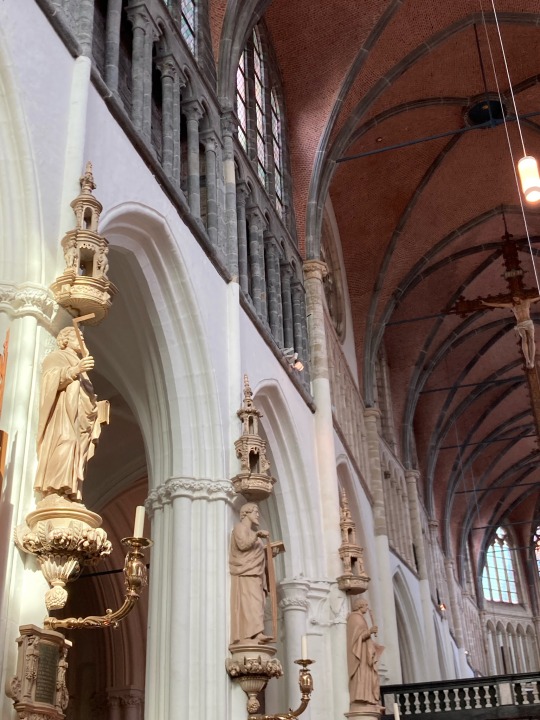
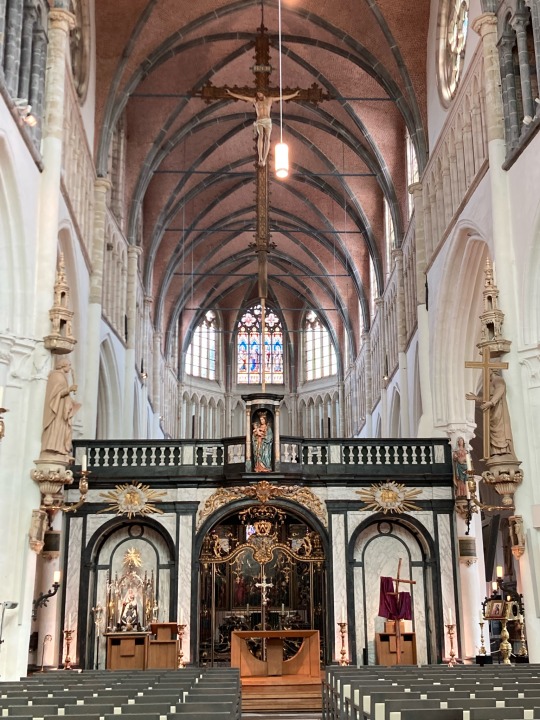

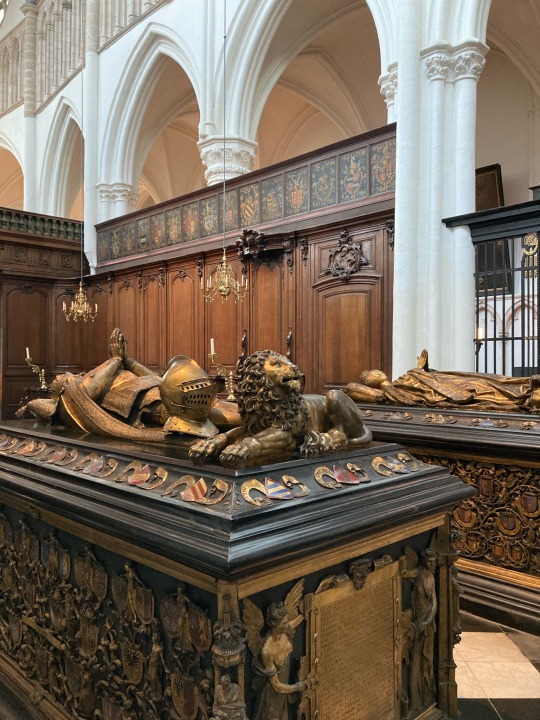
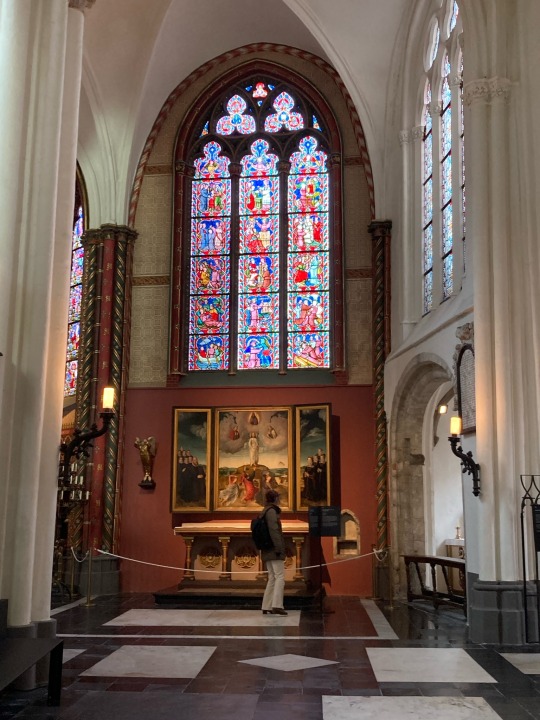
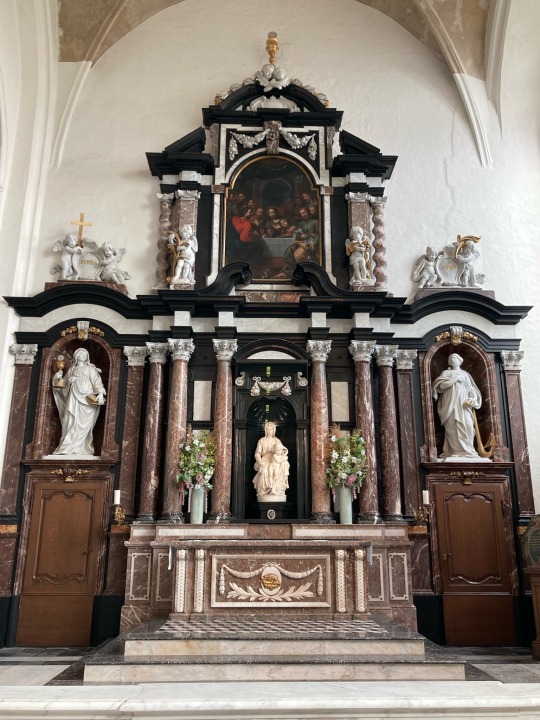
The Church of our Lady - Brugge
I chose this building because of its impressive interior. It was one of the last churches we visited on our group travels but by far one of the prettiest.
I mention it a lot but the attention to detail in these buildings is incredible considering the lack of time and effort that is put into spiritual aspects today. The design and masterful craftsmanship displayed in this building is very impressive. From the elaborate stained glass windows to the sculptures and paintings, to the elaborately carved vaulted ceilings.
Construction began upon the relic of a 9th-century Roman Chapel. The building itself sports gothic and baroque architectural style and hosts the Madonna and child sculpture carved by Michelangelo. Historians think it was probably meant for the Siena Cathedral but was bought by two merchants from Brugge. Since then, the Madonna has been stolen twice.
Some important people from the 13th-15th centuries like Charles the Bold and the Duke of Burgundy are buried in the space behind the choir loft.
As I mentioned before, I was surprised by the elaborate nature of the church. Before walking in I was not at all expecting the exquisite splendor of gold and marble held inside.
1 note
·
View note
Text
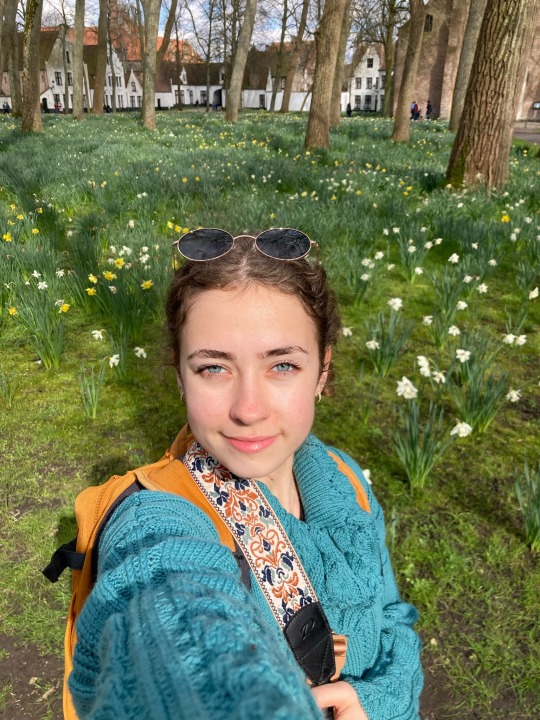

The Beguinage in Bruges
I chose this location because of its tie to nature. None of the other spiritual places we visited really had a strong tie to nature. Here the community is built around a vast green yard. Lush with grass, flowers, and small bodies of water.
Thai site connects to the reformation through the devout women responsible for its birth. In the 11th and 13th centuries women banded together to focus on their spiritual and material needs which became the birth of the beguine movement.
These women loved a pious and celebrate life but still attracted the disapproval of the Catholic Church. They did not follow the established rules of the Catholic Church, instead they didn’t take vows of poverty and were allowed to keep their property. They lived independently and freer lives than nuns and the male church leaders didn’t like this.
I was surprised to learn that this community is still inhabited today. Some women, all single women from Brugge, from the Order of Saint Benedict continue to live there.
1 note
·
View note
Text
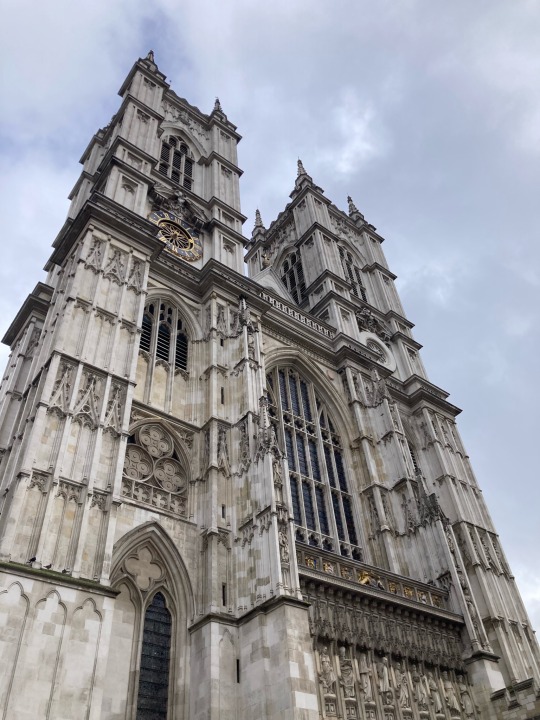
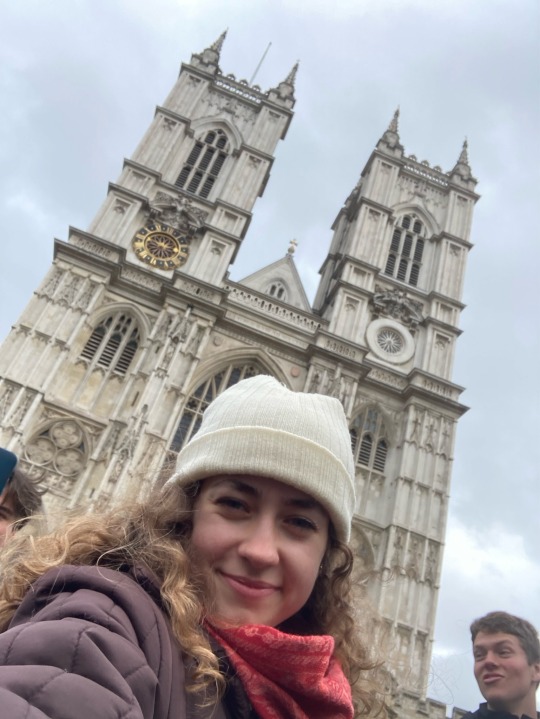
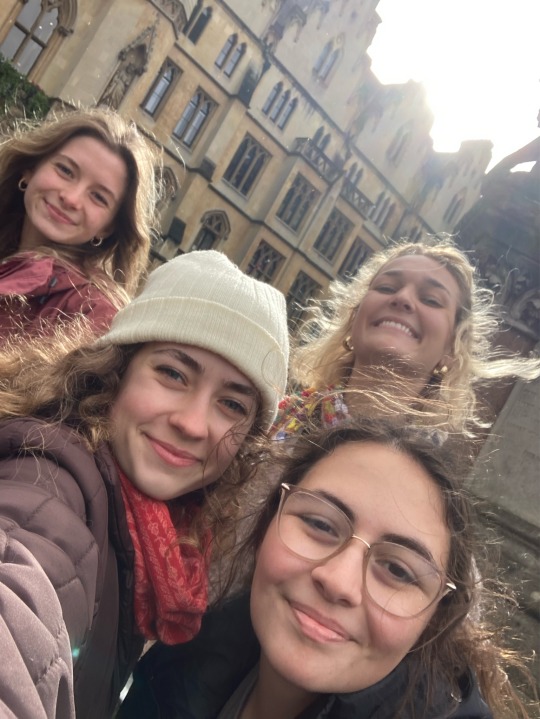
Westminster Abbey
We stopped by Westminster on our walking tour of London. I chose it because of its breathtaking exterior. We were not able to explore the inside but standing in front and taking in the building was a treat! We all gathered around to get our pictures with the building which can only be expected with a building displaying such beauty.
Westminster is connected to the reformation through King Henry Vlll. Henry is known for breaking away from the Roman Catholic Church and establishing his own church, the Church of England, because the pope would not let him to divorce his wife.
There are many famous people buried or commemorated here like Charles Darwin. The church also houses the remains of Henry’s 4th wife and his children.
What stood out to me was the churches immense size. Up until that point we had visited many churches but none seemed to match Westminster. Gazing on its towering form I also noticed a golden clock imbedded into the front. I think it is interesting that only one clock was installed since it gives the face of the church a semi unsymmetrical look.
0 notes
Text
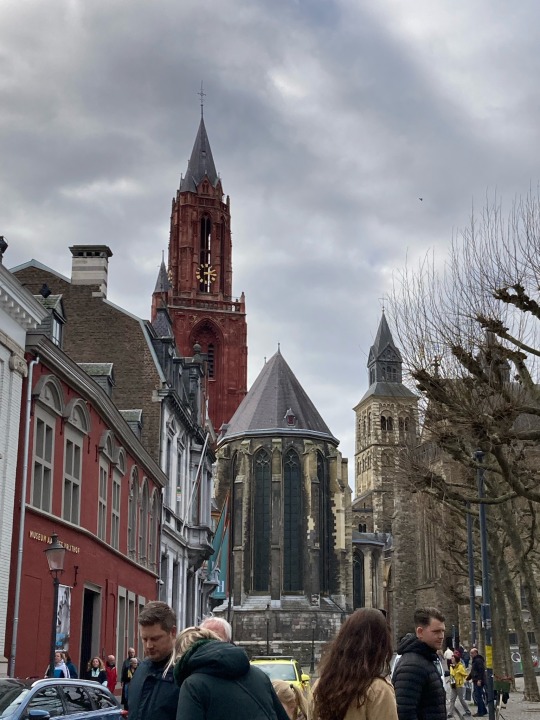

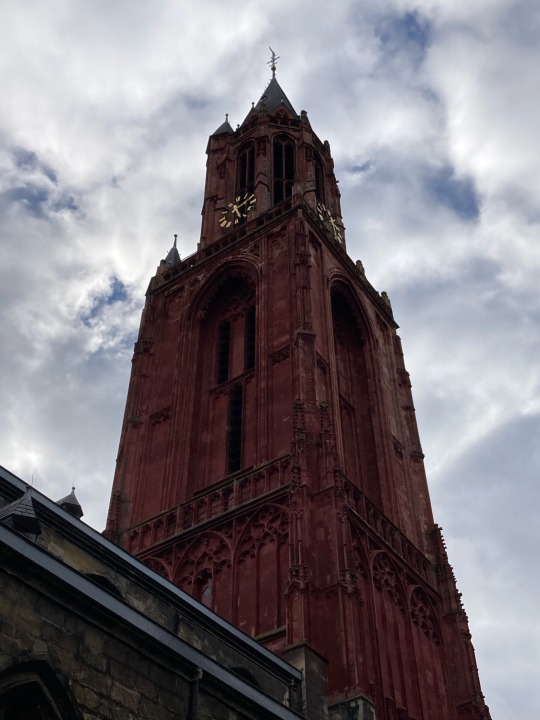
Basilica of St. Servatius/Church of St. John, Maastricht
Walking into that main square of Maastricht I was immediately struck by the contrast of these two churches. St.Johns was the epitome of typical European architecture. Neutrals paired with gothic arches and simple architecture on the outside o sealing vaulted ceilings within.
On the other hand, St. Servatius is boasts a bold red exterior with a towering steeple. The two seems kind of like a physical representation of hell and heaven to me. That might not be a conventional interpretation of the two but the colors of each church caused my mind to lean in that direction.
The history of these two starts with Dutch reformation. St. John’s was originally a baptistery for St. Sevatius but eventually became the autonomous meeting place for the Dutch reformed church.
I was surprised by the bright coloring of St. Servatius. I have not seen another church in all of our travels of Europe and the UK that bears a slight resemblance.
0 notes
Text
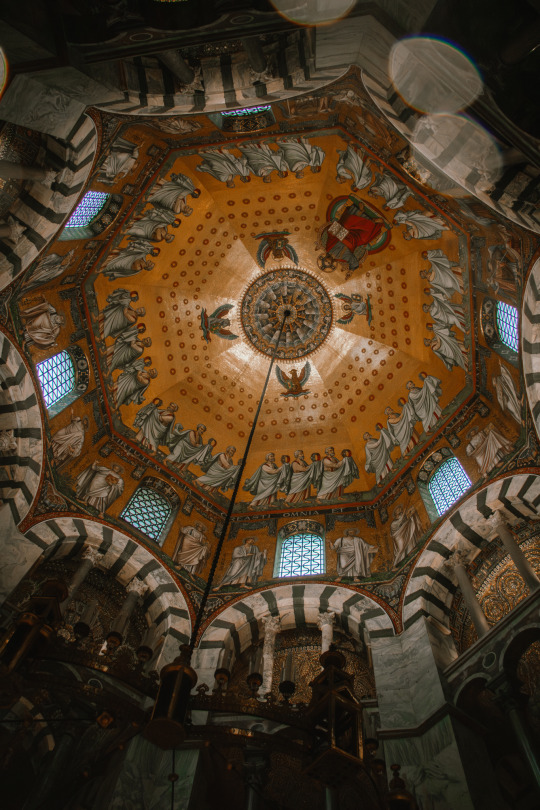
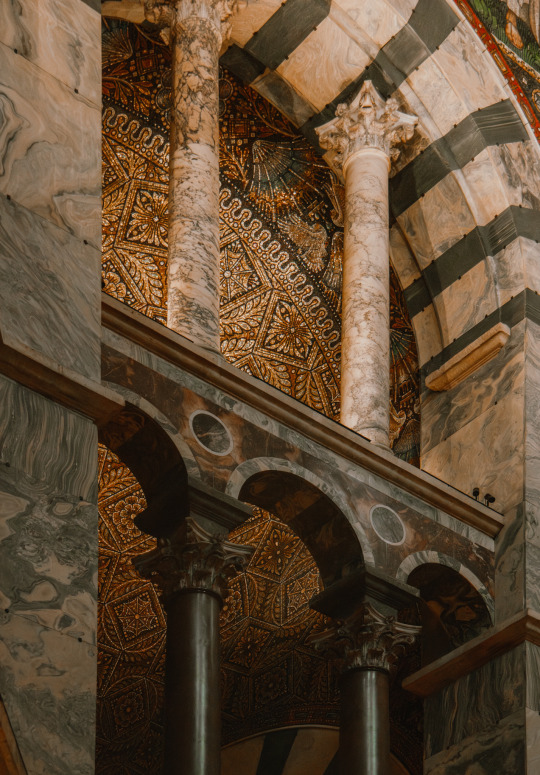
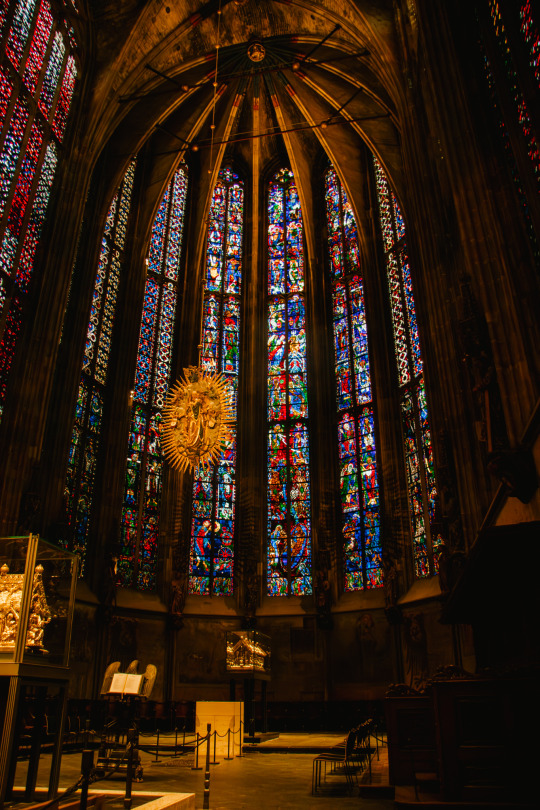
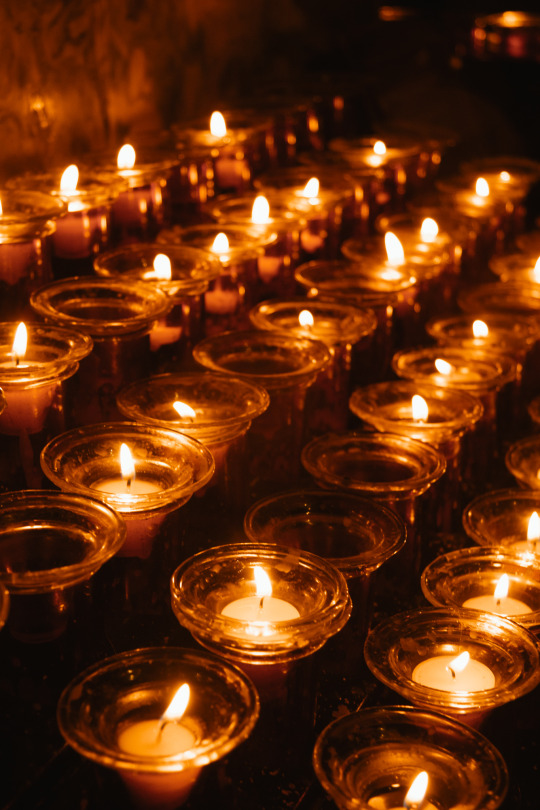
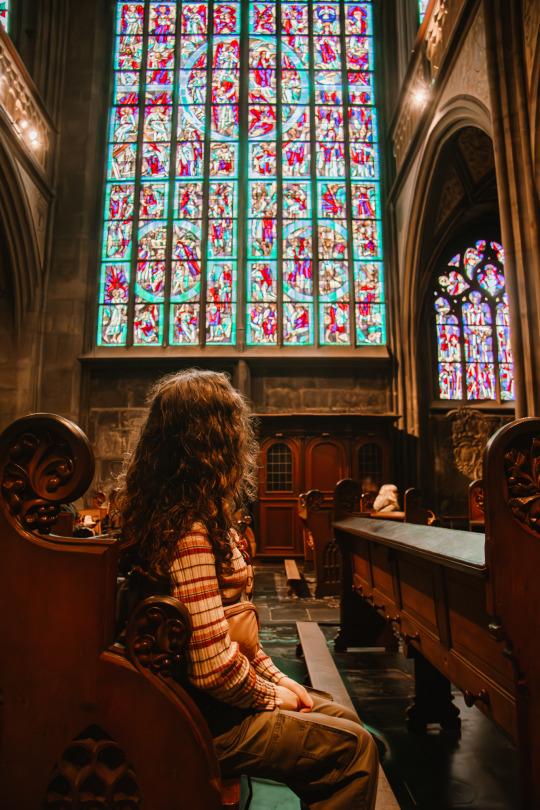

Aix-la-Chapelle Cathedral, Aachen, Germany
This chapel located in Aachen, Germany is the first cathedral our group of students visited to begin study abroad. I remember being struck by the vast expanse of the cathedral paired with the incredibly detailed artistry lining every inch of the interior.
I selected this cathedral because of the impact it left on me. I still vividly remember walking in for the first time. The sense of awe that I felt then, returns in memory.
The cathedral was commissioned by Charlemagne, the Holy Roman Emperor himself. There was no staple architecture style at this time so Charlemagne hired architects from Italy and other areas in Europe to collaborate on the Cathedrals design. The result became the origin of many European style churches to follow.
Because so many architects were called to work on this cathedral aspects of the architecture can be sorted into categories based on region. The Greek and Italian style marble collumns. The large mosaic dome and bronze doors bear the imprint of Byzantine tradition.
The stained glass was originally designed to portray Bible stories to the illiterate.
Aachen was Charlemagne’s favorite city. So much so that he was buried in this cathedral and his remains can still be found there today.
I was surprised by the magnitude of mosaics found in this cathedral. Every wall is covered upon entry and completely envelops the circumference of the chapel. I personally love mosaics and similar ceramic art. Knowing the time and planning that goes into completing a small mosaic, I was astounded by the time, effort, and attention to detail which was evident in the masterful artwork I saw on the walls.
12 notes
·
View notes